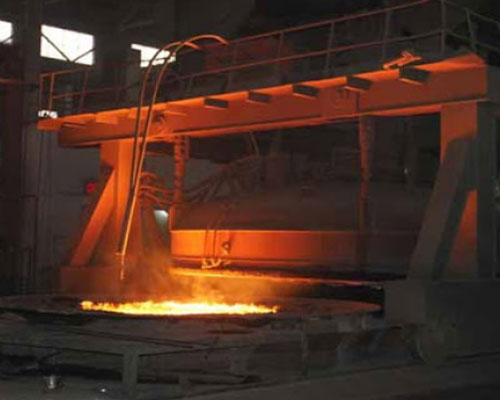The main reason for aluminum pinholes:
The higher the smelting temperature, the more serious the molten metal will absorb hydrogen from the humid air. The main source of hydrogen is the decomposition of water vapor at the high temperature of the molten aluminum. The solubility of hydrogen in molten aluminum increases as the temperature rises, but the solubility in solid aluminum is very low. Therefore, during the solidification process, the pores formed by hydrogen precipitation have a greater relationship with the alloy melting temperature and melting time. If the control is improper in the later stage of melting, such as the heating is too fast or too high, the amount of hydrogen absorbed by the aluminum liquid will be large, the hydrogen will diffuse in the aluminum liquid more fully, and the probability of pinholes will be greater. There are fewer pores near the outer surface because of faster cooling. According to some information, at 700℃, the solubility of hydrogen in 100g of aluminum is 0.5~0.9cm3. When the temperature rises to 850℃, the solubility of hydrogen increases by 2 to 3 times. Therefore, the melting should be controlled below 750°C, and rapid melting is advocated, but the problem of too fast rising speed in the later stage of the heating stage should be controlled.
Operational analysis
①The charge is not clean, and the baking time for the back charge is short.
② Poor design of pouring system.
③High pouring temperature and improper pouring operation will bring in gas and slag.
④ The refining agent is wet, and the standing time is insufficient after the deterioration treatment.
⑤The preheating of the charge is inadequate and careless.

Aluminum Pinholes Treatment Measures
Melting process
① Change the ratio of new material to recycled material, 30% of recycled material and 70% of new material.
②Improve the smelting process, and remove the rust, silt and other dirt on the surface of the charge before use to prevent the introduction of moisture and oil.
③To obtain aluminum castings with no pores or less pores, the preheating of the charge is the key link. The preheating temperature is 350~450℃ and kept for more than 3h. If the baking (preheating) charge time is short, there are still a small number of small and diffuse pores in the section of the cast casting.
Drying the refining agent and pre-heating the refining agent have great advantages. After refining and before pouring, the alloy liquid should be allowed to stand for a certain period of time, which is to eliminate the oxidation inclusions and hydrogen in the aluminum liquid. If the refining agent is wet, it will also bring in a lot of hydrogen. For furnaces that have been overhauled or not used for a long time, they must be fully baked, otherwise the moisture in the refractory will evaporate and form a humid atmosphere, which will lead to the formation of pores during smelting.
In order to eliminate pinholes in aluminum alloy castings, the crucible used for smelting can be used as a ladle. When the crucible is left to the pouring temperature after refining and metamorphism, the crucible is manually lifted and poured directly to avoid air inhalation due to inverted ladle. The tools used should be cleaned up before use, and then coated with protective coatings and preheated and dried to avoid poor preheating and adsorption of moisture on the surface, which will generate a large amount of gas during the smelting and pouring process, resulting in pinholes in the castings.
In addition, use a special covering agent to cover during the melting process. The degassing-refining-modification agent is selected, and the added amount is 0.6% of the weight of the molten aluminum. It needs to be dried before use. When the temperature of the alloy liquid reaches 720℃, use a stainless steel bell jar to press the degassing refining agent into the bottom of the crucible and move at a constant speed along the inner wall of the crucible, and prevent all kinds of dirt from entering the crucible.

